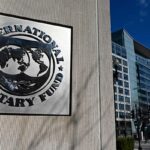Recent projections have revealed that policies enacted by the United States President, Donald Trump, may cause a $7bn loss for U.S.
This loss is said to be driven by new visa policies, which are affecting foreign students and immigrants who contribute to the economy of the U.S.
According to projections, the potential $7bn loss for U.S. will not only affect the economy of the country but also the vitality of higher education institutions and local communities, as international students contribute to both academic and economic landscapes.
The projection report done by NAFSA: Association of International Educators forecasted a 30-40% drop in new international student enrollments by the end of 2025.
According to NAFSA, this could potentially reduce international student numbers in the U.S. by 15%.
The analysis, based on SEVIS and State Department data, estimated that this international student decline could strip $7 billion from the U.S. economy and jeopardize over 60,000 jobs.
According to data quoted by the NAFSA, in the 2023-24 academic year, international students contributed $43.8 billion to the U.S. economy and supported 378,000 jobs, with states like California, New York, Massachusetts, Texas, and Illinois seeing the largest economic benefits.
“This analysis, the first to calculate the potential economic impact of fewer international students on cities and towns across the country, should serve as a clarion call to the State Department that it must act to ensure international students and scholars can arrive on U.S. campuses this fall,” said Fanta Aw, CEO of NAFSA.
Pan-Atlantic Kompass reports that this development came after tightened visa policies and heightened scrutiny under Trump’s administration.
Recall that recently, the U.S. Department of Commerce revealed that international students represent a $50 billion contribution to the economy, rivaling major U.S. exports like soybeans and corn.
However, visa appointment delays and new conditions for student visas have already led to a 12% drop in new enrollments this year alone, equating to roughly 130,000 fewer students and a $4 billion revenue loss, according to projections from NAFSA.
From January to April 2025, F-1 visa issuance fell by 12%, and the latest State Department data showed a decline of 22% in May 2025 as compared to the same period last year.
Also, foreign students in India, China, Nigeria, and Japan have been lamenting limited visa appointment availability, causing many to give up on dreams of studying in the U.S. and pursuing other alternatives.
This development is more pronounced particularly as India and China together made up 54% of international enrolments in 2024, and Nigeria and Japan are the seventh and 13th largest markets.
Recall that Trump announced a travel ban on 19 countries, restricting students from nations like Iran, Libya, and Syria.
NAFSA estimated that this policy alone could cost $3 billion annually and 25,000 jobs, as it blocks students who contribute to local economies.
Also, an Executive Order signed in January 2025 has imposed heightened scrutiny on F-1 student visa applicants from “countries of concern,” including China and India, which account for 54% of international students.
The policy requires additional background checks, delaying visa approvals by up to six months.
Similarly, the visa interview was temporarily suspended from May 27 to June 18, 2025.
NAFSA reported that this pause delayed over 50,000 student visa applications, particularly impacting fall 2025 enrollments.
Meanwhile, these policies have made countries like Germany, Japan, South Korea, and Malaysia emerge as alternative countries for foreign students.





